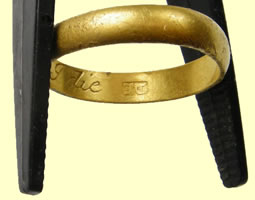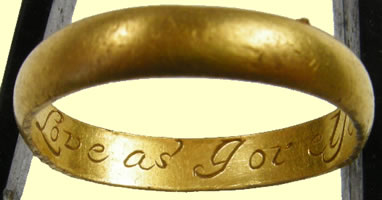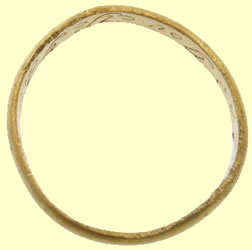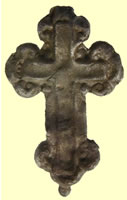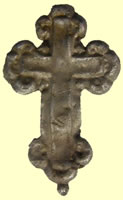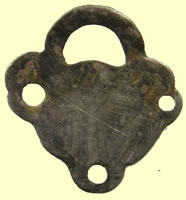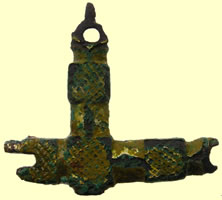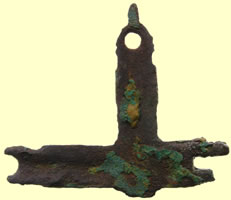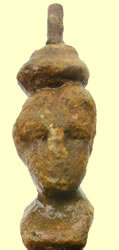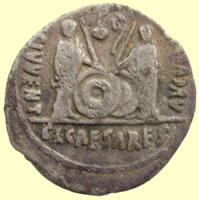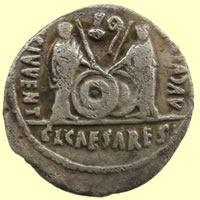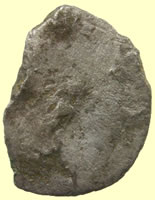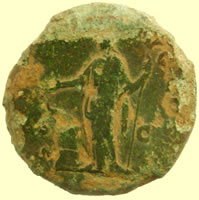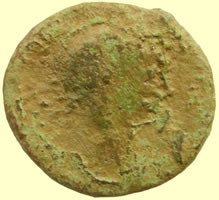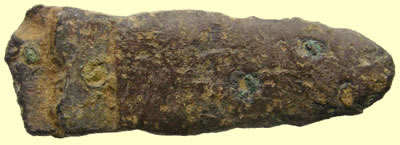

Metal detecting holidays in England with the World's most successful metal detecting club.
Twinned with Midwest Historical Research Society USA
| 2012 Feb finds page | |||
17th/18th gold posy ring reported as treasure to the museum 3.29g, 20.16mm dia 'LOVE AS I YOU ELSE I DIE' - maker mark - old English FC |
|||
Medieval silver cross - similar construction to 13thC Knights templer badges 1.06g, 22.82mm |
Medieval gilded silver dress fitting 1.82g, 17.35 mm |
||
Medieval decorated buckle chape |
|||
Object type certainty: Certain A cast copper alloy cruciform horse harness pendant hanger. The fitting to the harness strap had three rivets originally; the remains of two of them are still in their holes, the other is missing. The lower hinged section is broken and the pin is missing. Measurements: 96 mm x 59 mm. ChronologyBroad period: MEDIEVAL |
|||
Georgian figurine finial |
|||
 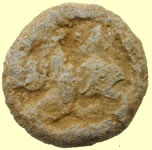 |
 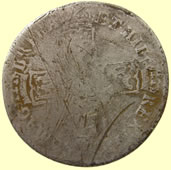 |
||
| Roman lead token | 1696 William III milled silver shilling | ||
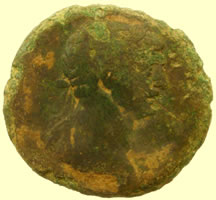 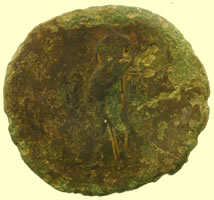 |
|||
Huge 2ndC Roman bronze coin sent for ID 18.15g,30.65mm You seem to have "lucked out" a bit with this one. It's Trajan (96-117 AD) and the bust style is appropriate for the later part of his reign. There's not very much of the reverse type visible, but here, as I said, you're in luck. This appears to be an example of the PROVIDENTIA AVGVSTII (SPQR S - C) type. It's the parallel lines in both the vertical & horizontal planes clearly indicating that there is a short pillar or column to the right of the somewhat slouching figure. On a later type, this would probably be Securitas leaning against the column, but at the time of Trajan's reign, Securitas or the personification of national security was not so much of an issue as it would become in a century or so when Securitas would replace Providentia (the personification of the forethought of the emperor in providing - well, whatever was provided at an Imperial level) in the same posture of ease. This type dates to 116 AD. Mark
|
|||
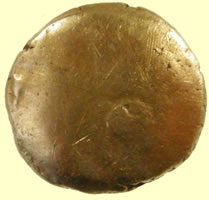 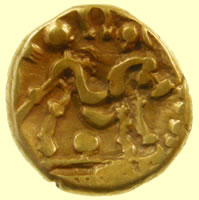 |
|||
50 BC Celtic gold full stater - Gallo Belgic 16.49mm, 6.05g |
|||
 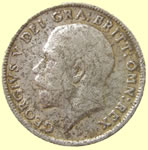 |
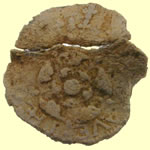 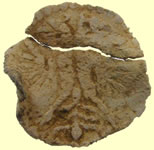 |
||
| 1916 George V milled silver sixpence | 1603 James 1st lead token | ||
 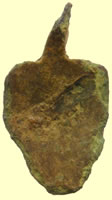 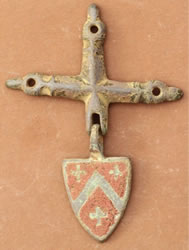 |
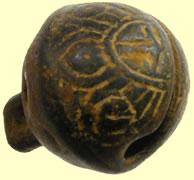  |
||
| 13thC heraldic shield pendant - prancing lion facing left - red enamel and traces of gold | 17thC decorated crotal bell - hammer foundry mark | ||
  |
  |
||
| 1935 George V milled silver sixpence | 1888 advertising watch winder - H.E Peck 8 New Bridge St - Watchmakers, jewelers, optician | ||
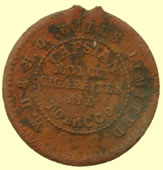  |
|||
1899 Col Baden Powell hero of Mafeking medallion - issued by W.H.O Wills Capstan Navy cut cigarettes
Lord Robert Baden-Powell of Gilwell (1857-1941) was a decorated soldier, talented artist, actor and free-thinker. Best known during his military career for his spirited defense of the small South African township of Mafeking during the Boer War, he was soon to be propelled to extraordinary fame as the Founder of Scouting. |
|||
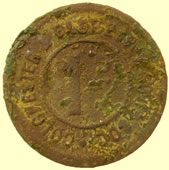  |
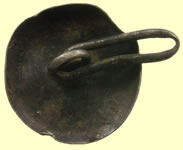 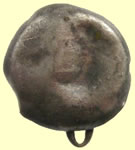 |
||
| 19thC Colchester Co- op society 1 shilling token | 18thC cuff link | ||
 |
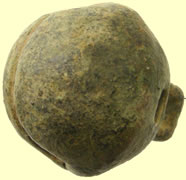 |
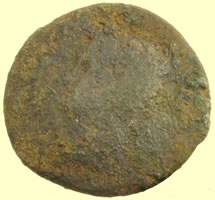  |
|
| 1550-1650 buckle | 18thC crotal bell | 2ndC Roman bronze coin - sent for ID | |
  |
|||
| Interesting decorated Saxon widget - no idea yet of its use | |||
 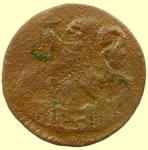 |
  |
||
| 1716 Dutch Holandia copper coin | 1645 Charles 1st hammered silver half groat - 'A' mintmark Ashby | ||
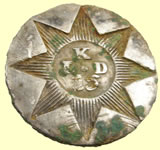 |
 |
 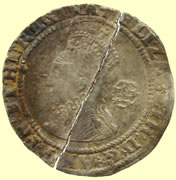 |
|
| 19thC - 15th The Kings Light Dragoon guards officers button | George 1st trade weight Crown G cipher London | 1578 Elizabeth 1st hammered silver sixpence | |
 |
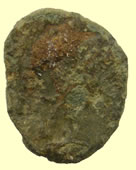  |
||
| 19thC livery button | Mid 4thC House of Constantine - tow soldiers standing | ||
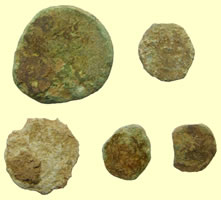  |
|||
| Lots of 1st to 4th C Roman 'grots' being dug | |||
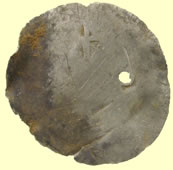 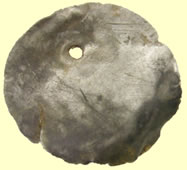 |
 |
||
| Worn 18thC Spanish silver reale | Medieval Steel yard weights | ||
  |
 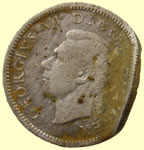 |
||
| 17thC bucket handle riveted plate | 1942 George VI milled silver sixpence | ||
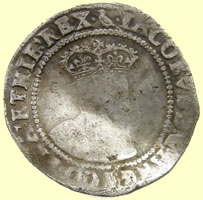  |
  |
||
| Irish 1603-4 James 1st hammered silver sixpence - 1st issue | 13thC Heraldic harness pendant - shield with 3 prancing lions facing left - red enamel and gilding | ||
 |
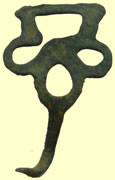 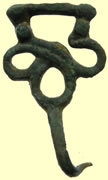 |
||
| 15th C casket key | 16thC Tudor clothing fastener | ||
 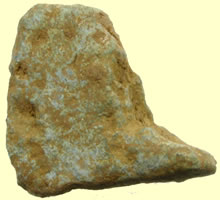 |
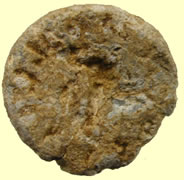 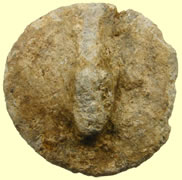 |
||
| 850 BC Bronze age socketed axe head fragment | Mid 13th C lead seal matrix | ||
  |
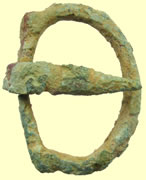 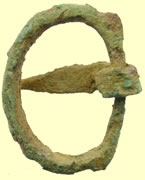 |
||
1279 Edward 1st hammered silver penny Rev CIVI/TAS/DVIE/ - Durham mint |
Medieval D buckle | ||
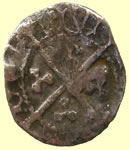  |
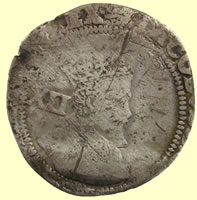  |
||
1361-9 Edward III hammered silver farthing Treaty period - New crown intermediate jewels - Obv + EDWARDVS REX
|
1619 -25 James 1st hammered silver shilling ( 12 pence) curly hair bust - 3rd coinage | ||
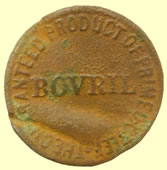  |
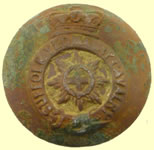 |
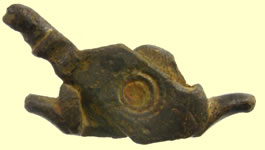 |
|
Bovril token - 50 times more meat extract - Nourishing Guaranteed product of prime beef |
WW1 Suffolk Yeomanry Cavalry button | 17thC Scissor pivot | |
 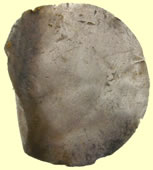 |
 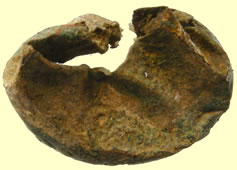 |
||
| Worn 1554 Mary hammered silver groat | Georgian gilded and decorated bottle top | ||
 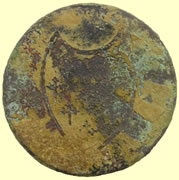 |
  |
||
1792 NORFOLK AND NORWICH HALFPENNY, PRO BONO PUBLICO MAY NORWICH FLOURISH (dot) Edge: PAYABLE AT N. BOLINGBROKES HABERDASHER &c NORWICH X as D&H 14 except no dash (-) in HABERDASHER |
1279 Edward 1st hammered silver penny CIVI/TAS type |
||
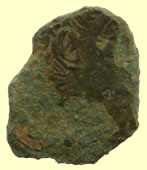 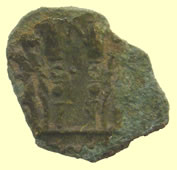 |
 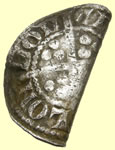 |
||
| Mid 4thC House of Constantine Roman bronze coin - 2 soldiers standing | 1341 Edward III hammered silver florin penny Obv EDWAR ANGLE DNS HYB Rev CIVI/TAS/LON/DON - London mint |
||
 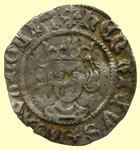 |
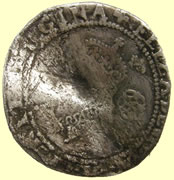 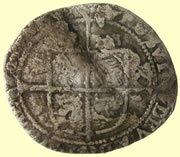 |
||
1427-30 Henry VI hammered silver penny - initial cross IIIb - mascle & rosette obverse stops Obv HENRICVS REX ANGLE Rev VIL/LA/CAL/ISIE with mascle and satire stops - Calais mint |
1578-9 Elizabeth 1st hammered silver sixpence - Greek cross mint mark | ||
  |
 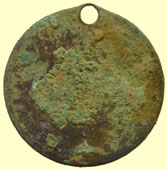 |
||
| C10th C Gilded Saxon hooked mount | 19thC Prince of Wales medallion | ||
  |
 |
 |
|
17thC Thomas Reynolds bays maker of Colchester hammered copper farthing - undated type |
Medieval buckle | 1550-1650 buckle | |
1356-61 Edward III hammered silver groat - Cross 3 Pre treaty Obv EDWARD.D G .REX ANGL Z FRANC D HYB Rev CIVI/TAS/LON/DON - London mint |
|||
  |
 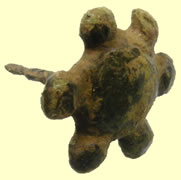 |
||
| 1922 George V milled silver sixpence | Roman mount | ||
 |
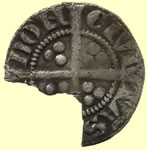  |
||
| Georgian watch winders | 1341 Edward III hammered silver florin penny Obv EDWAR ANGLE DNS HYB Rev CIVI/TAS/LON/DON - London mint |
||
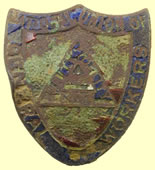 |
 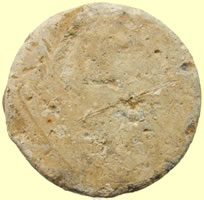 |
||
| 20thC General workers union enamelled badge | Lead trade weight with clear cipher marks - not one in my ref books | ||
  |
 |
 |
|
| 1701 William III copper half penny | 19thC Royal Engineers button - GR | 18thC Royal artillery button | |
 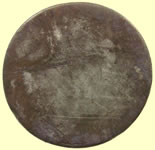 |
  |
||
| 1696 William III milled silver sixpence | 1939 George VI milled silver sixpence | ||
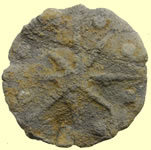  |
  |
||
| 15thC lead token - unusual double sided impression | 1247 Henry III voided hammered silver half penny | ||
|
 |
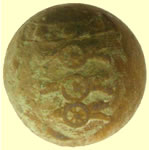 |
|
| Decorated and enamelled 17thC utensil handle - traces of red , green and white enamel remain | WWII German Navy Kreigsmarine Button |
18thC Royal artillery button | |
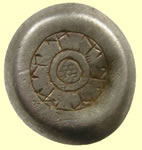 |
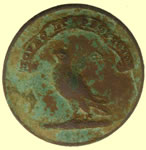 |
|
|
| 18thC silver button | 19thC livery button | Medieval hooked mount | |
|
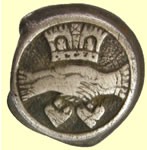 |
||
| Medieval buckle chape | 17thC Charles II silver button - reported to museum as treasure | ||
 |
 |
||
| 4th Regiment of foot lapel badge | 18thC Royal artillery button | ||
 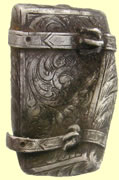 |
  |
||
| Victorian silver snuff box lid | 17thC lead bird feeder | ||
  |
 |
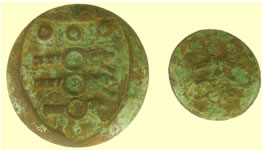 |
|
Mid 4thC Roman coin sent for ID This one I can tell where it was minted with a lot more certainty than I can tell you who is on the obverse and what the exact reverse type is. - The exergual mintmark is quite clearly that of Aquilea - S]MAQ[S - Sorry I can't be more specific than this, but the legend fragment on the obverse is just too illegible and the reverse legend virtually does not exist. Mark |
Unknown shipping line button | 18thC Royal artillery buttons | |
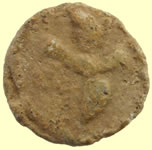 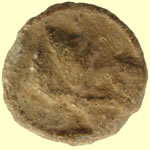 |
  |
||
| 17thC lead token | 17thC copper decorated ring | ||
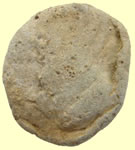 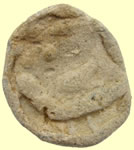 |
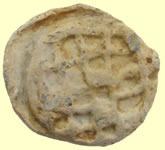 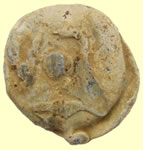 |
||
| 17thC lead token | 17thC lead token | ||
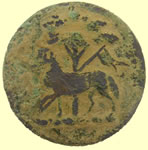 |
 |
 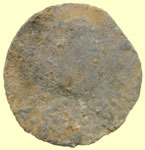 |
|
| 19thC livery button | 19thC livery button | 18thC lead token | |
 |
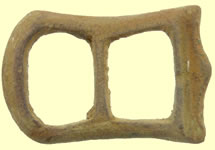 |
 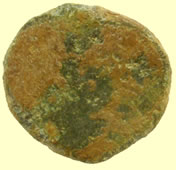 |
|
| Medieval D buckle | 1550-1650 buckle | 15thC Angel coin coin weight - bent right leg Circa 1493 - British |
|
 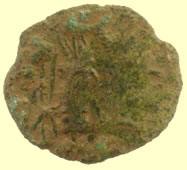 |
|||
4thC Barbarious radiate Roman coin sent for ID This is a fairly well-preserved specimen of contemporary radiate copy. You say "little" and so I assume that it's small enough that even aside from the crudeness of the workmanship, there can be no rational question of it was ever having been intended to fool anyone into thinking it was an official-issue Roman piece - in other words, deception was never the intention of the makers of this piece. This is an important concept to understand with these pieces - they are by no means what we'd call "counterfeits" - they're more of an emergency currency issued to take the place of official coin which has disappeared from circulation due to hoarding, export, or the small but steady and inevitable attrition of pieces lost and not recovered (until now). The Imperial coin is no longer being regularly replaced due, generally, to a vacuum, whether temporary or permanent, of the centralized power which issues and distributes official coin - generally through the pay of soldiers and the purchase of foodstuffs and other army supplies through the local economy as its main mechanism. These so-called "barbarous" radiates were, at one time, thought to belong to the period after the withdrawal of Roman troops from Britain and northern Gaul in the 5th century, but it is becoming clear as more hoards are found and analyzed that they are virtually contemporaneous with the prototypes they emulate. The withdrawal of Italian Roman authority during the mid 3rd century and the time of the Gallic Roman Empire was both the time-frame and the reason for the existence of these pieces. The Gallic Roman Empire evidently only sporadically refreshed the local supplies of coin, since official Gallic and unofficial radiates are often found mixed together in hoards. The exact place they had and role they played in the economic life of the area is not clear. Perhaps they circulated at par with the official (but token, due to base-metal fabric) coinage, or perhaps at a discount. They may have served as something analagous to modern "plantation tokens" which were used mainly in small, closed, internal economic systems like those seen in large farms/villas or latufundia. I'm not certain to what degree the large-scale industrial agriculture model penetrated into Roman Britain, but that is a possible origin with the large Roman estate becoming somewhat of a template for the later, insular feudal units of organization. There is also the possibility that these coins were issued as military scrip (meant to be exchanged at some later date for official coin) to troops on the borders in order that a catastrophic military loss would not also mean a huge capture of "real" wealth by the enemy. I'm not completely certain what the reverse type was supposed to emulate. Although the obverse is fairly typical of the Victorinus/Tetricus "bearded radiate bust" types, the reverse type doesn't immediately "resolve" adequately into a stylized or abstract copy of any of the normal types like Pax, Victory/Comes or Spes. It is possible, even likely, that it is intended to be a Pax type with Pax facing left holding a long scepter in her left hand - the anticipated olive-branch in the right hand, however, is not visible here, so I can't be certain. An assortment of unofficial pieces found in Britain and Northern Europe can be seen grouped together here: http://www.stoa.org/gallery/album476 you may draw your own conclusions as to which of these types this piece most closely resembles. Or you can look at the official types of the era here: http://www.stoa.org/gallery/album110 to try to see what it may have been intended to emulate. Mark |
|||
  |
 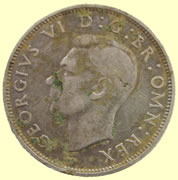 |
||
| 1868 Victoria milled silver 3 pence | 1937 George VI milled silver florin (24 pence) | ||
 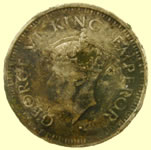 |
  |
||
| 1943 India George VI milled silver rupee | 'Castle' silver foil quality tag | ||
 |
 |
 |
|
| 1500-1700 mount | 1899 Birmingham silver - pure silver mark | Georgian watch winder | |
Sent to Mark Lehman for ID This of course is the "Gaius & Lucius Denarius" of Augustus. One of the most common pieces surviving from the 1st century, there are many who feel this piece actually was more likely to have been the so-called Tribute Penny (if, in fact, the episode in the Gospel of Matthew ever took place) than the Tiberius Denarius usually marketed as the "Tribute Penny". These were produced at the mint of Lugdunum (modern Lyon) 2-4 AD. RIC 207, RSC 43, SR 1597. Mark |
|||
This is a major fragment of a silver Antoninianus (2 denarii) of, I believe, Philip I (244-249 AD) I can't quite figure out exactly what's happening on the reverse, but it seems like it may be a presentation scene with a deity or personification presenting a wreath or a Victory figure to the Emperor. Mark |
|||
19.75g,31.52 mm
This is a Sestertius (4 Asses) of Marcus Aurelius (161-180 AD) the reverse shows Salus, the personification of health (in the sense of wholeness or the health of the Empire as an entity) feeding a snake rising from the altar before her. This is a fairly common reverse type which recurs throughout the 1st-3rd centuries. Mark
15.26g, 33.58mm A quick answer now and I'll get back to it in a while for a more detailed answer. At this size it would be a Sestertius, I don't immediately recognize the portrait, but I will get back to it later today. Mark |
|||
 |
 |
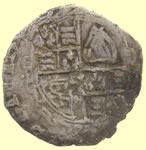  |
|
| 18thC Toy cannon | 16thC Tudor clothing fastener | 1634 Charles 1st hammered silver penny | |
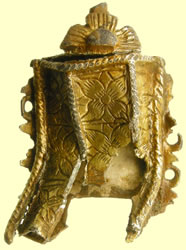 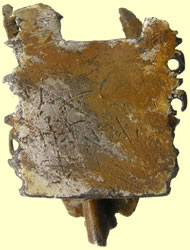 |
|||
16thC Tudor gold on silver jewelry item - reported as treasure to museum. 7.74g, 33.57mm L |
|||
 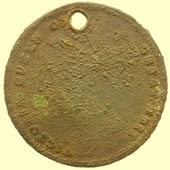 |
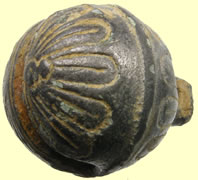 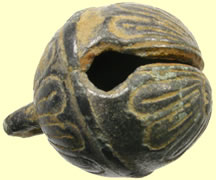 |
||
| 1839 Victoria Queen of Great Britain medallion | 17thC crotal bell - Orb foundry mark | ||
 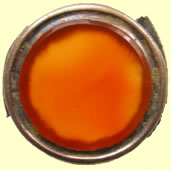 |
 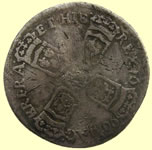 |
||
| Georgian gold brooch fragment | 1696 William III milled silver sixpence | ||
 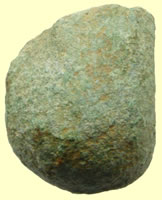 |
 |
||
| Iron Age handle | Ronson lighter | ||
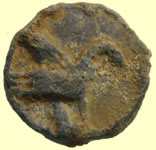 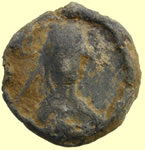 |
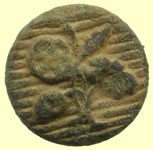 |
||
| Roman lead token | Georgian button | ||
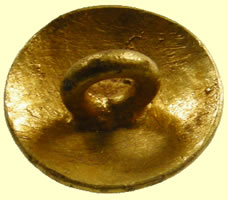  |
|||
Stunning 17th/18thC enamelled solid gold button - reported as potential treasure to museum 2.78g,15.26mm |
|||
|
|
||
| C8thC Saxon decorated strap end - rivet fixings | 1stC Celtic cosmetic wode grinder | ||
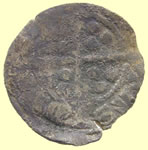  |
 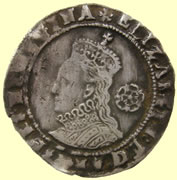 |
||
| Crispy Edward hammered silver penny - CIVI/TAS type - 'cooking' it to remove crust | 1576 Elizabeth 1st hammered silver shilling | ||
More finds on 2012 Feb Finds II page
|
|||
